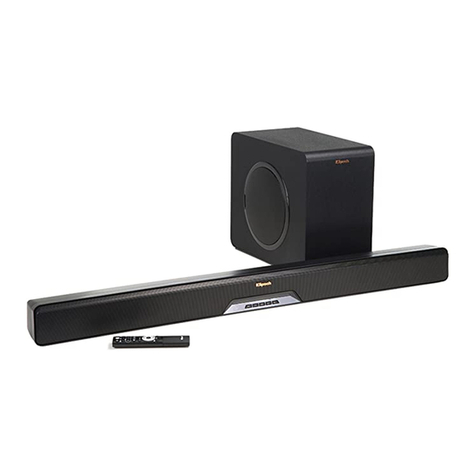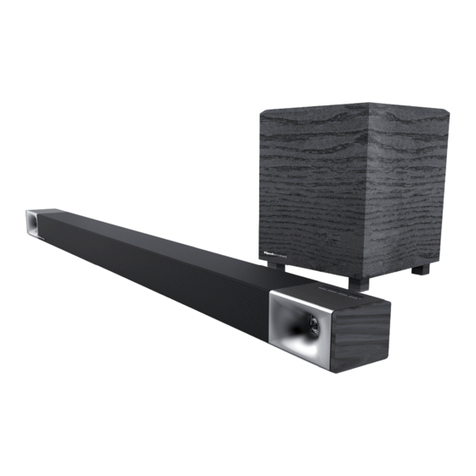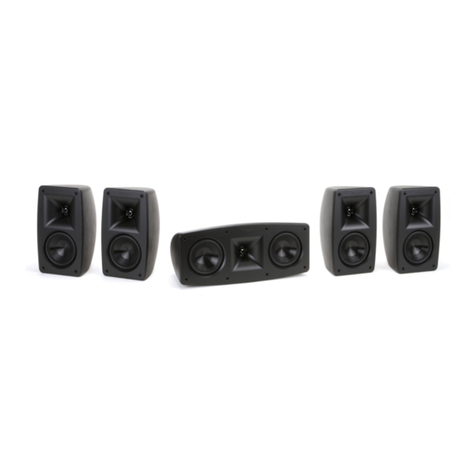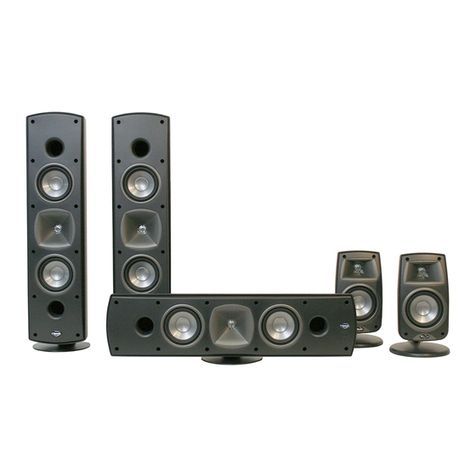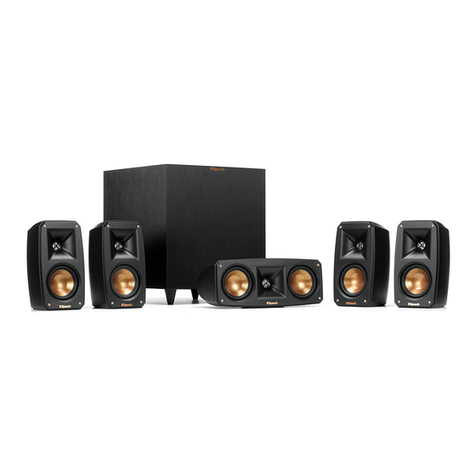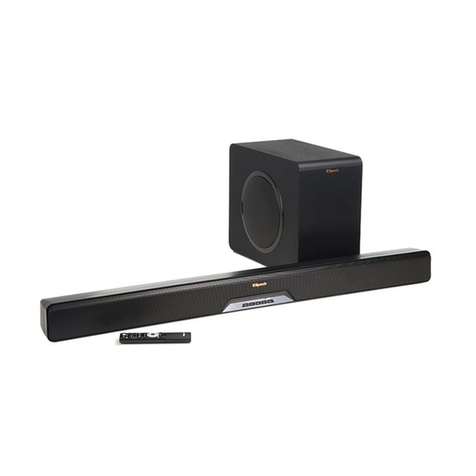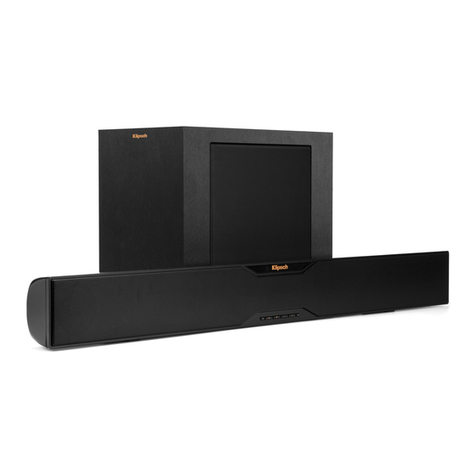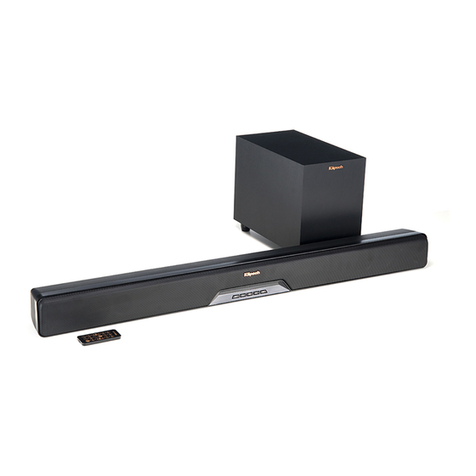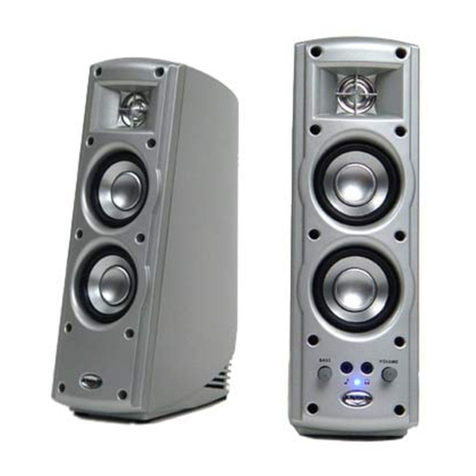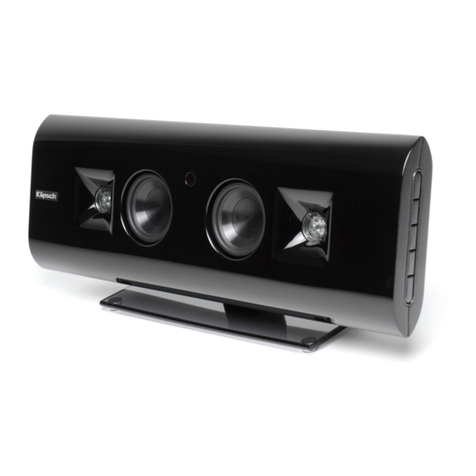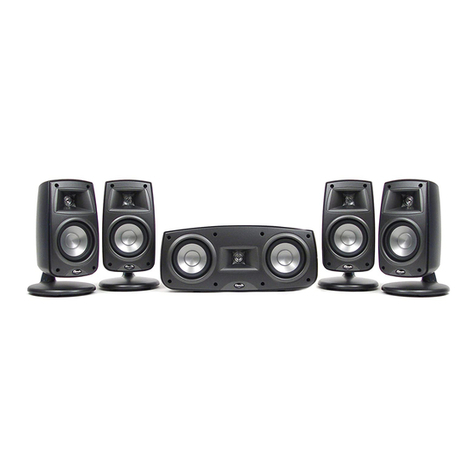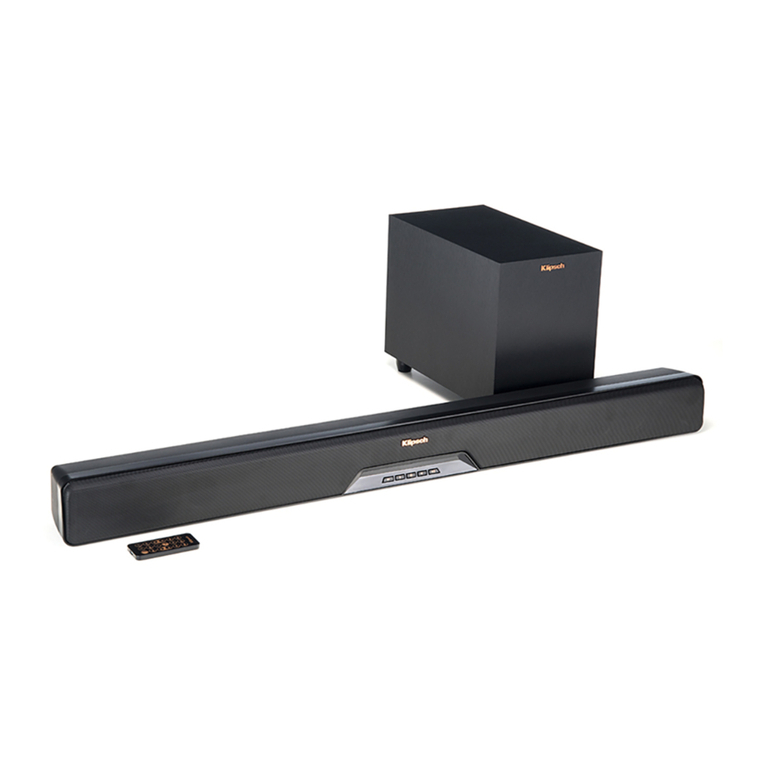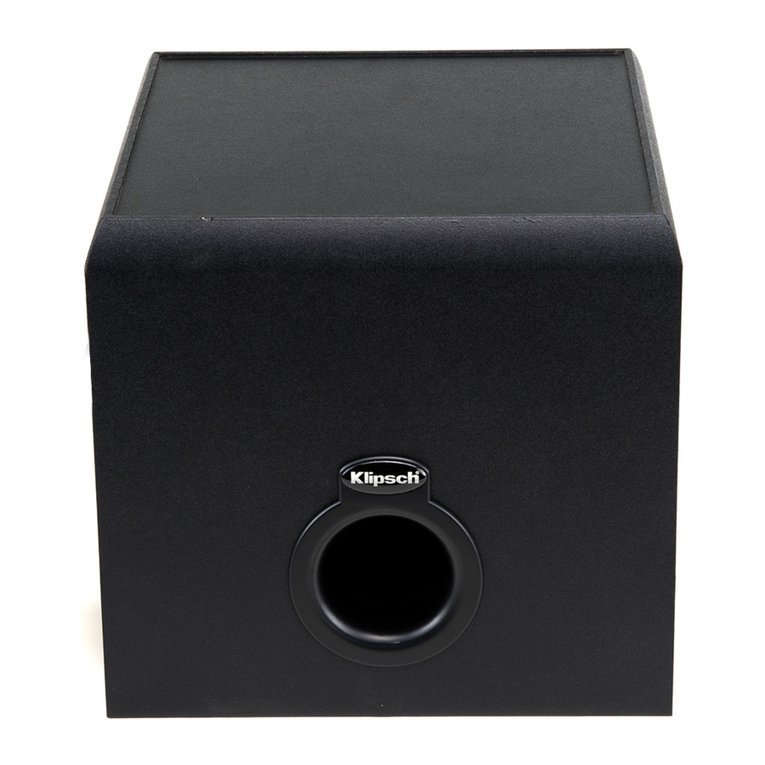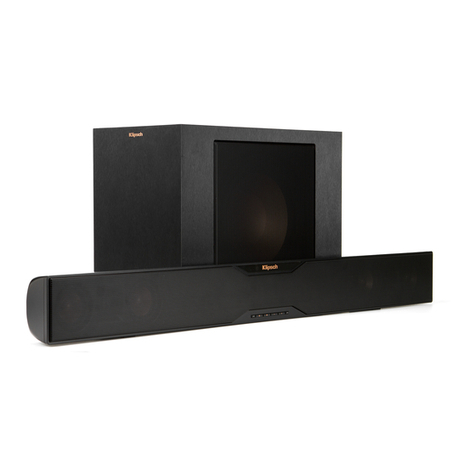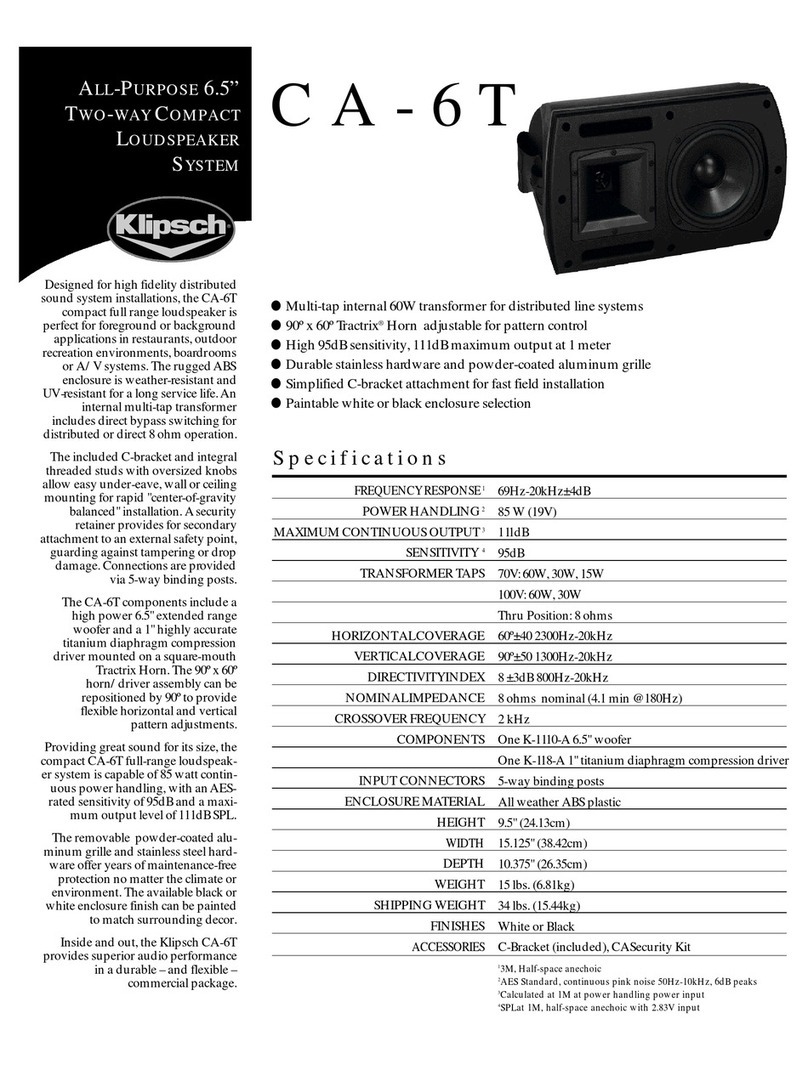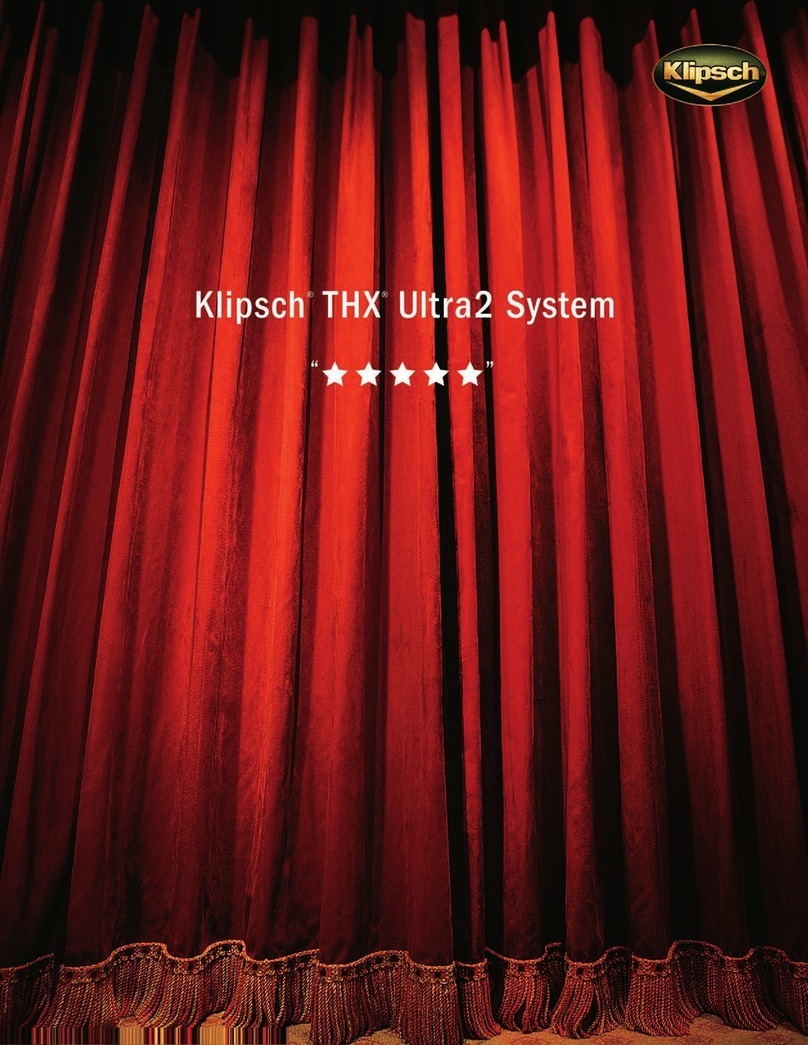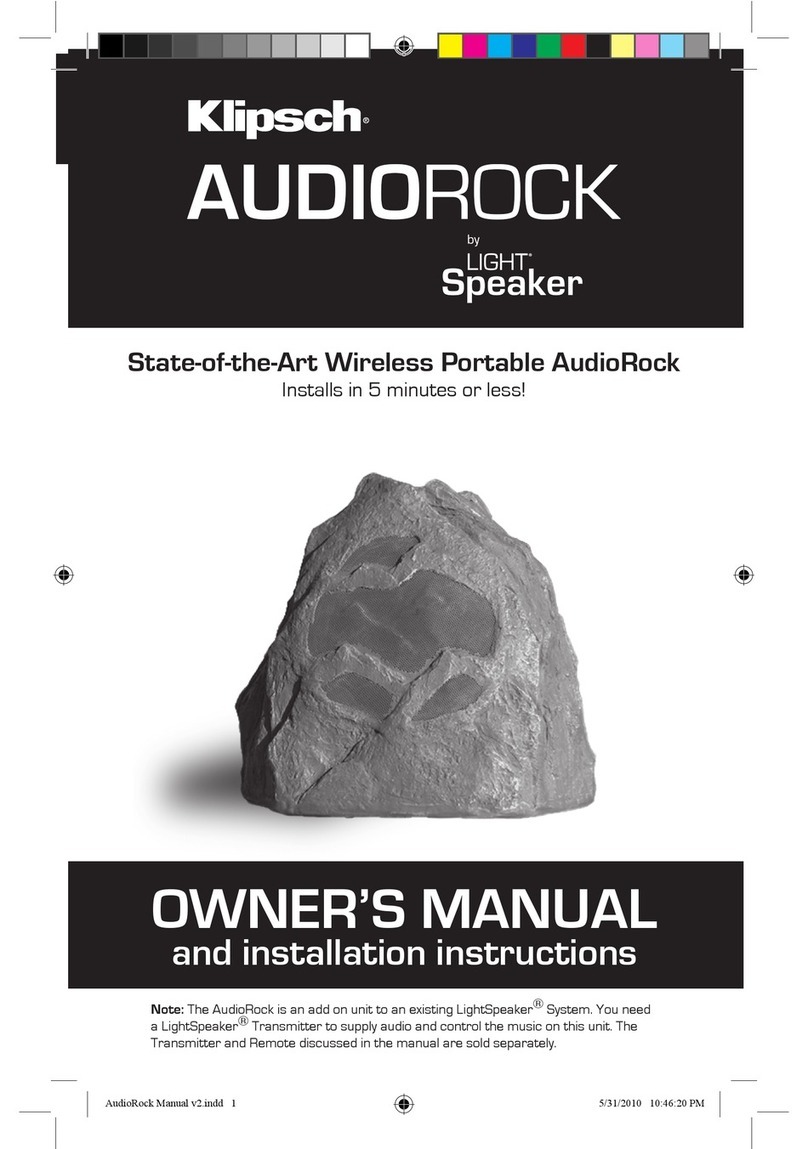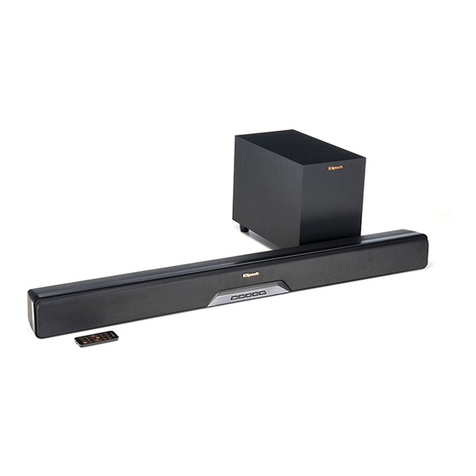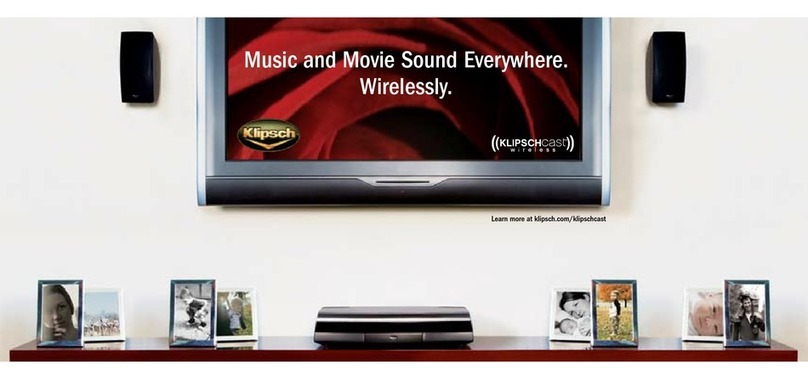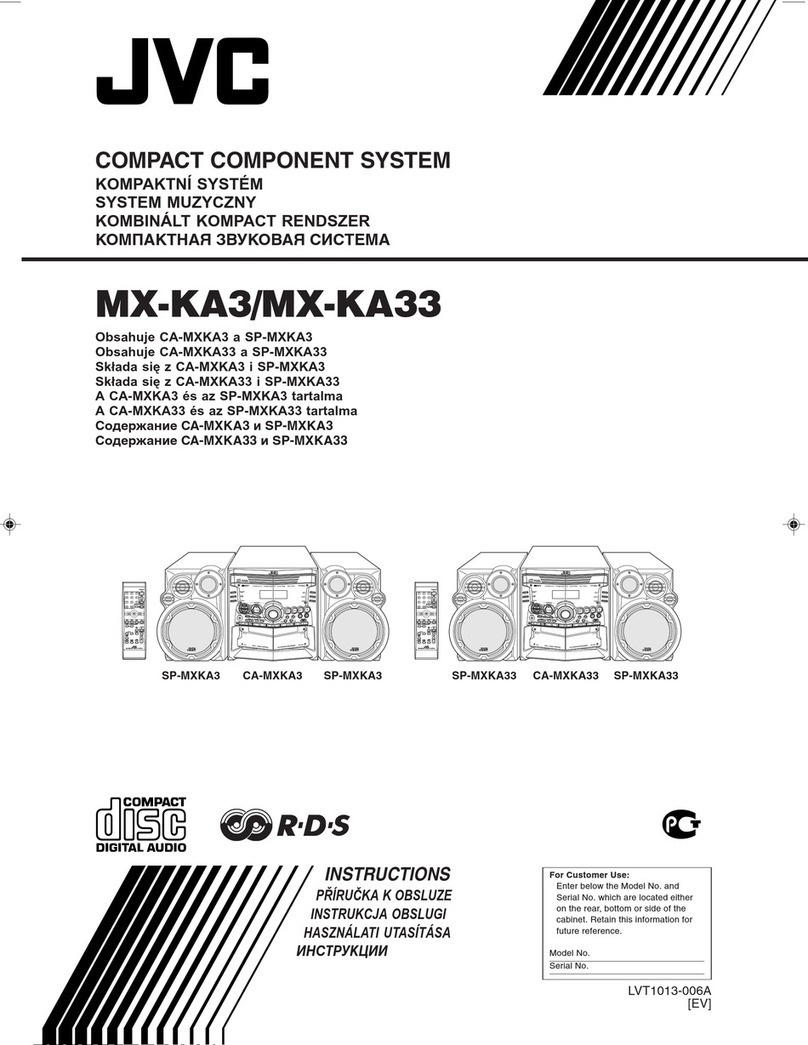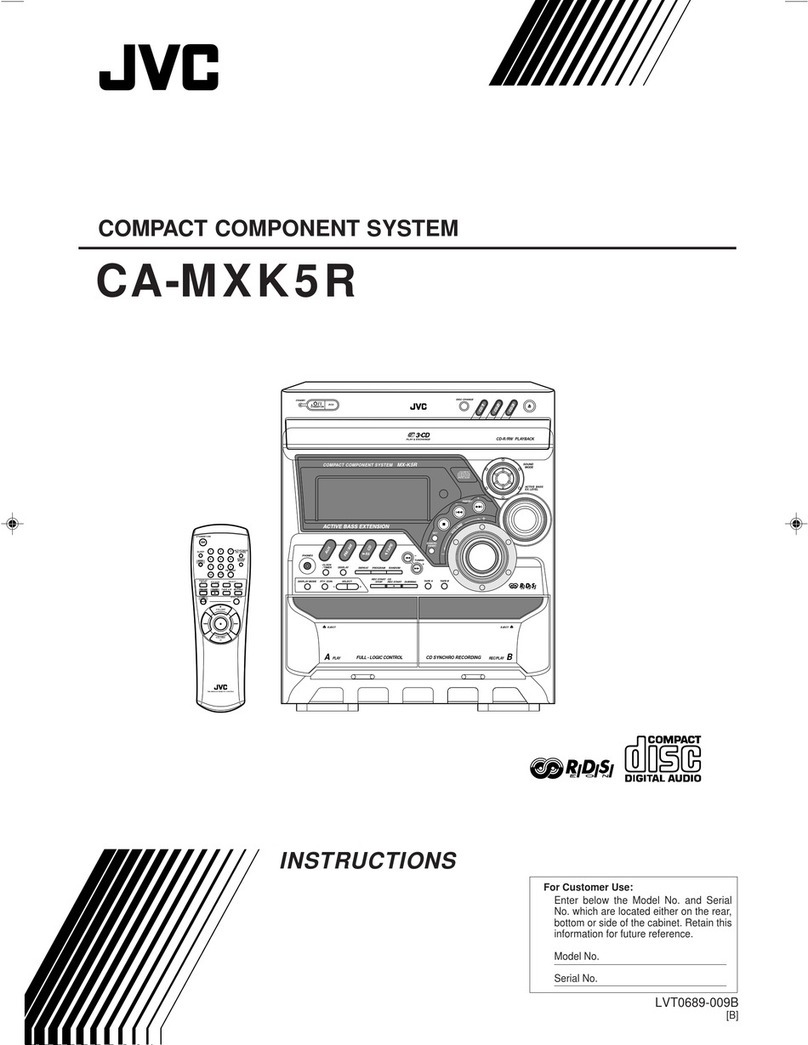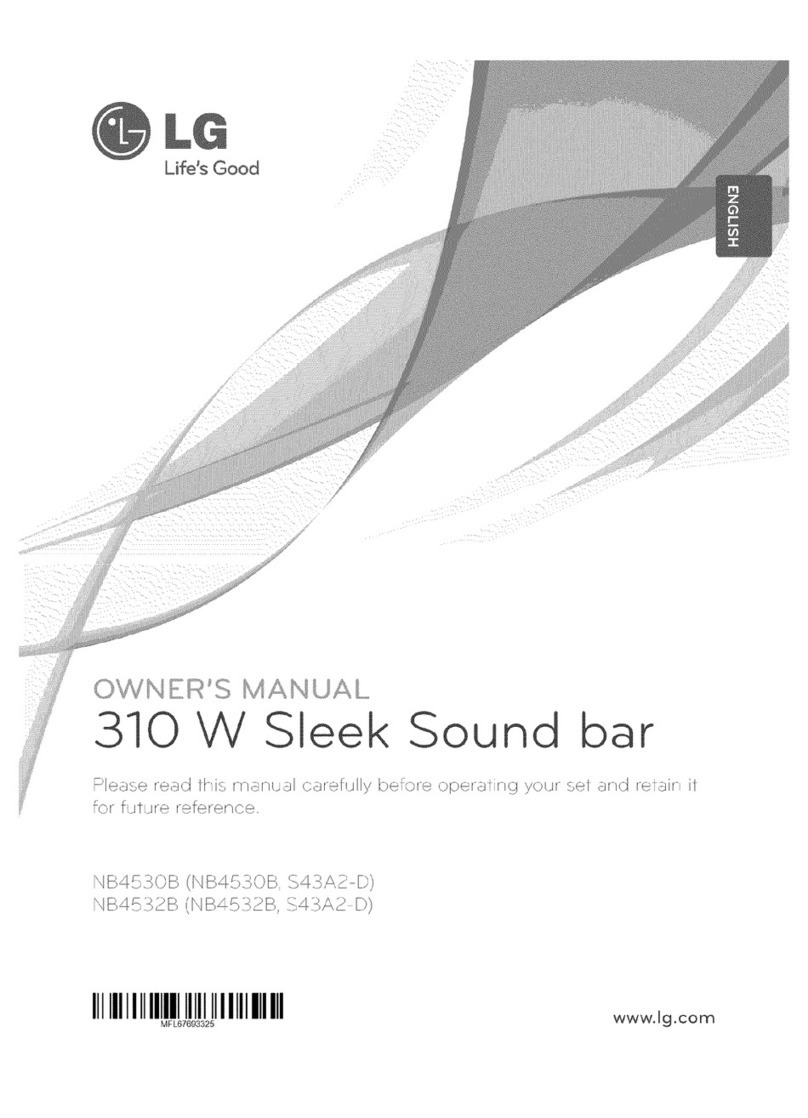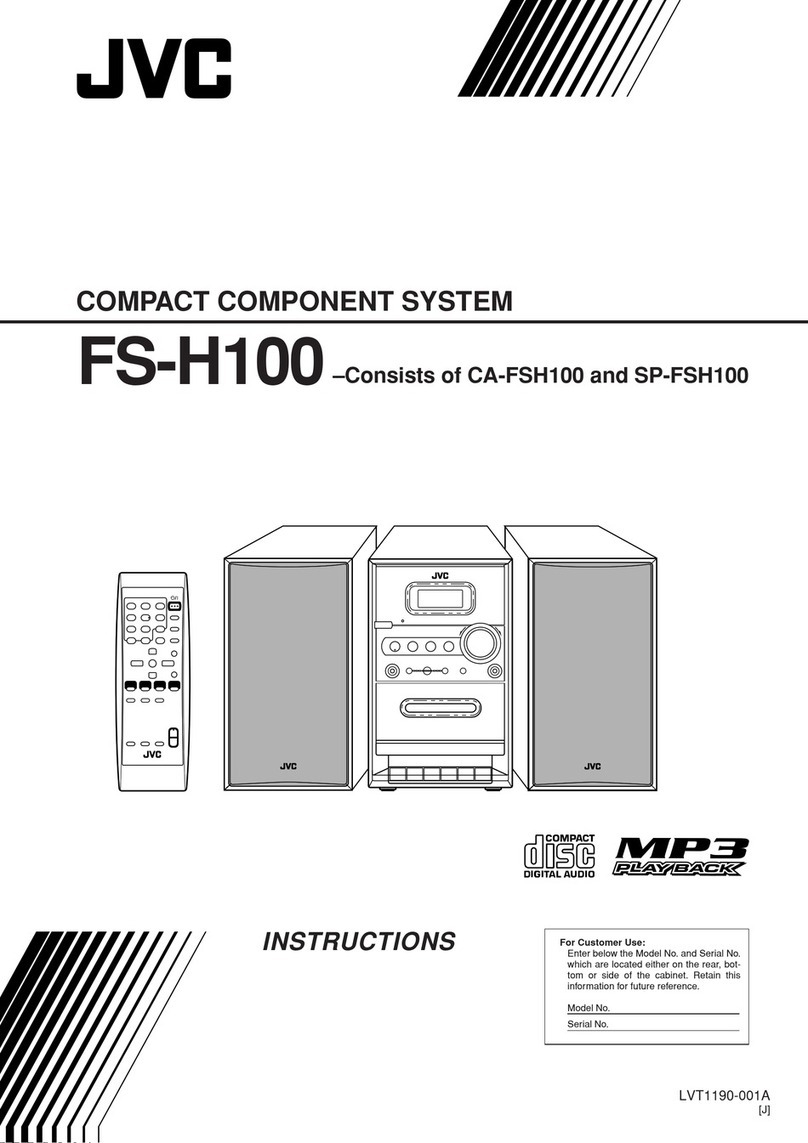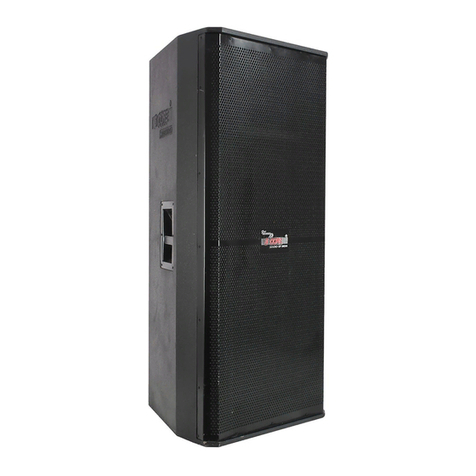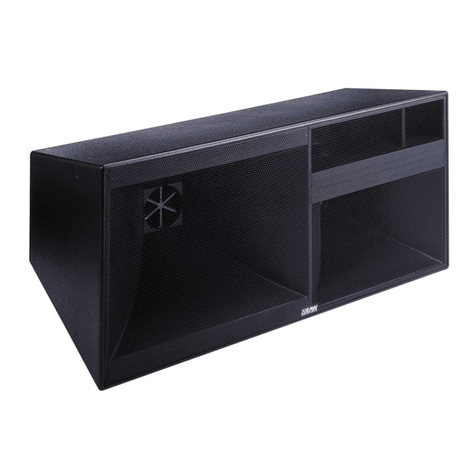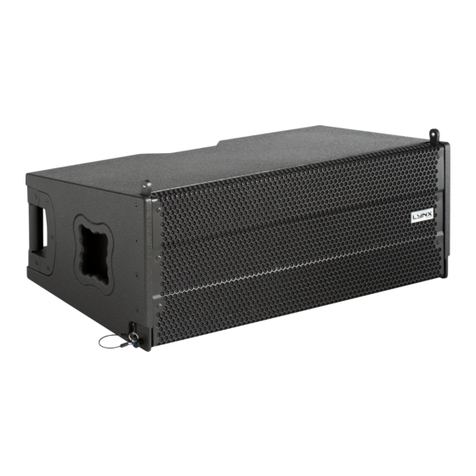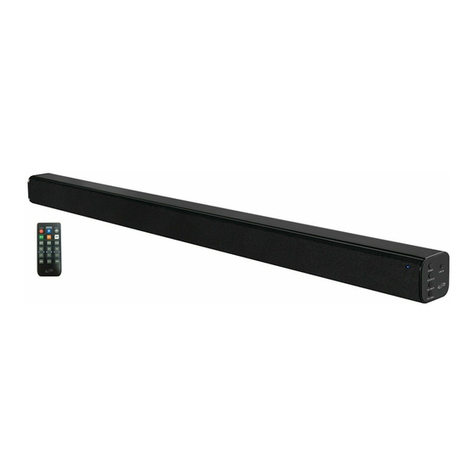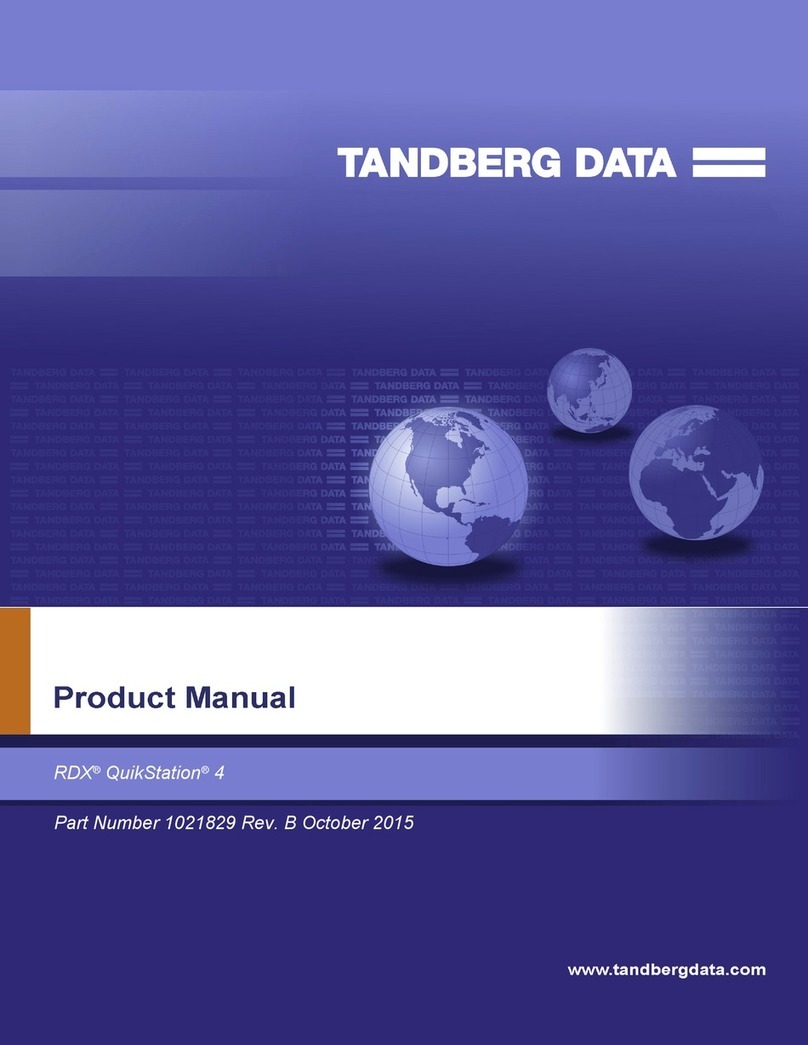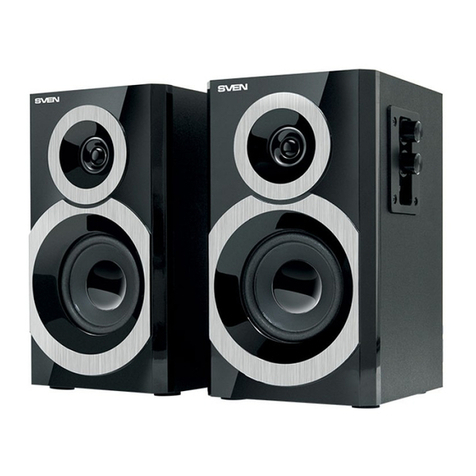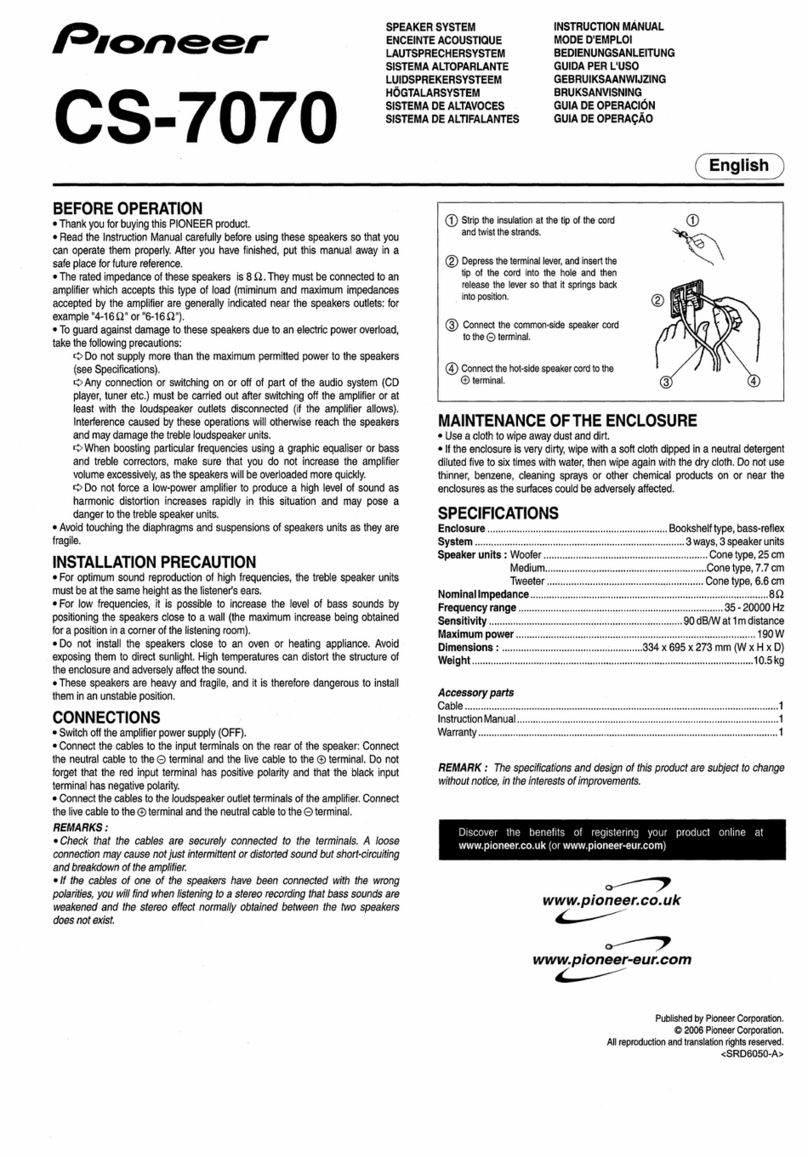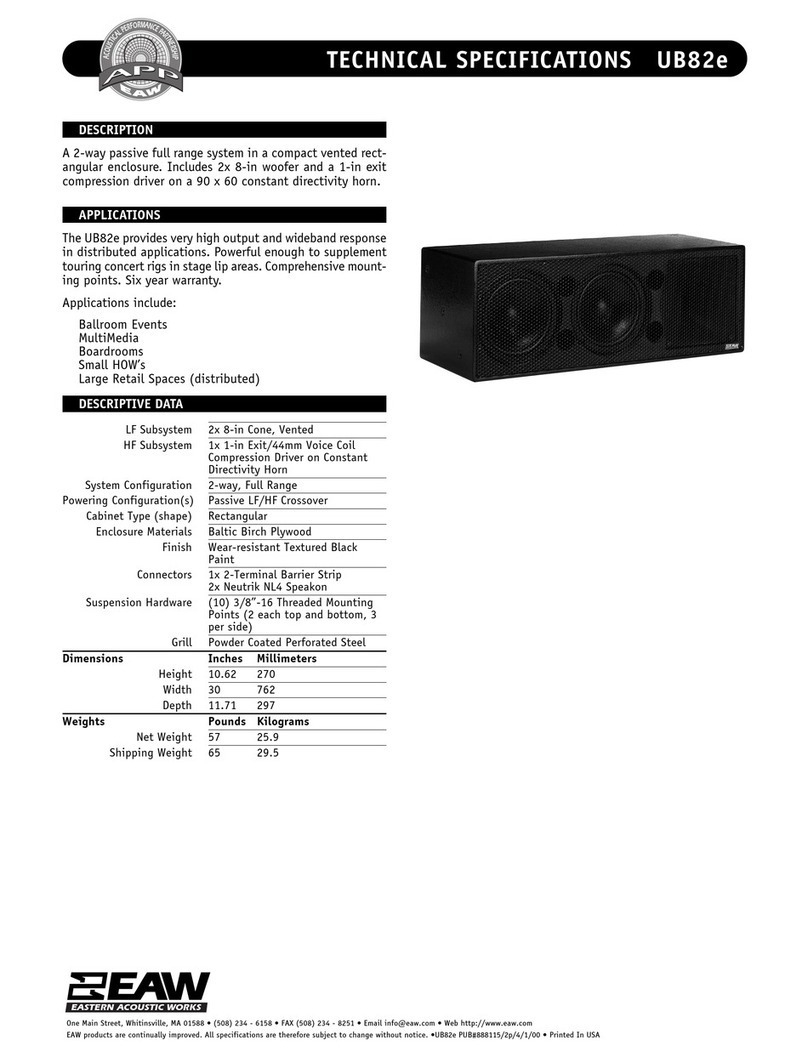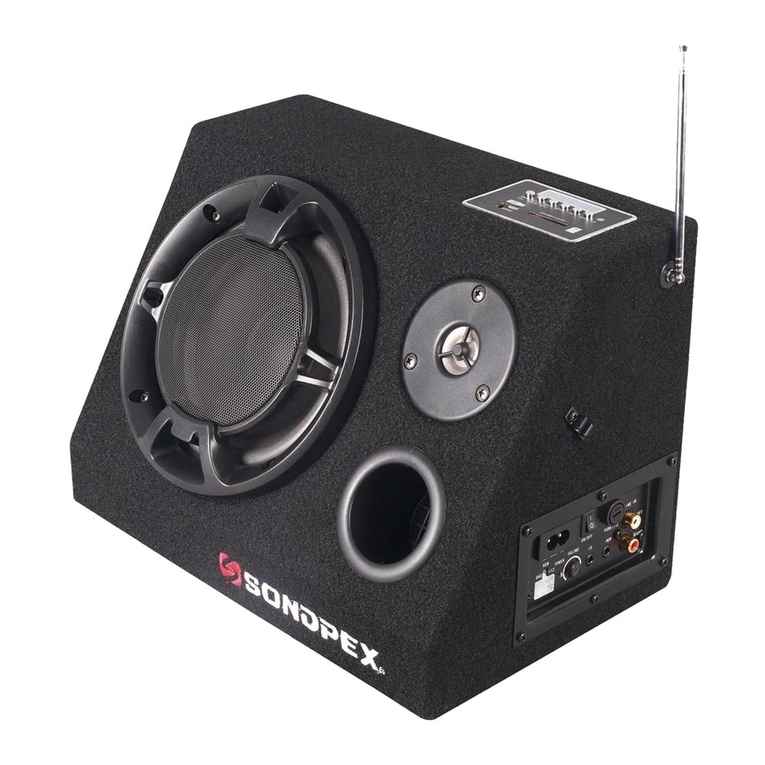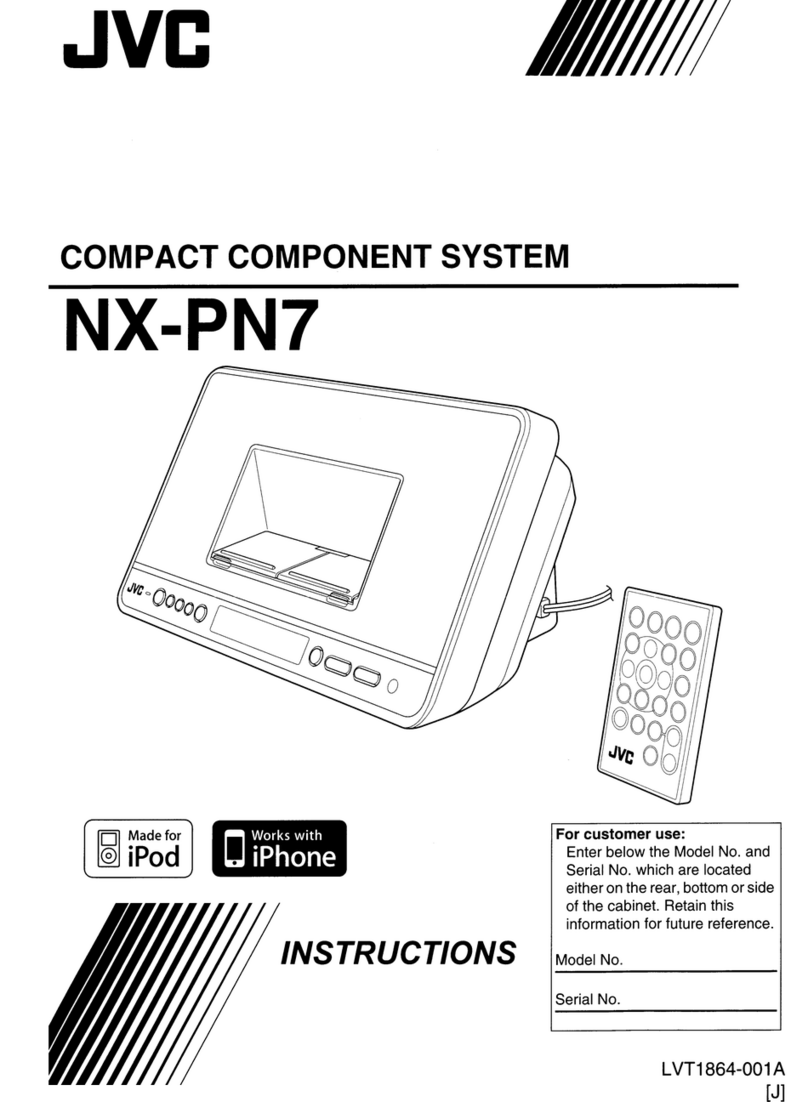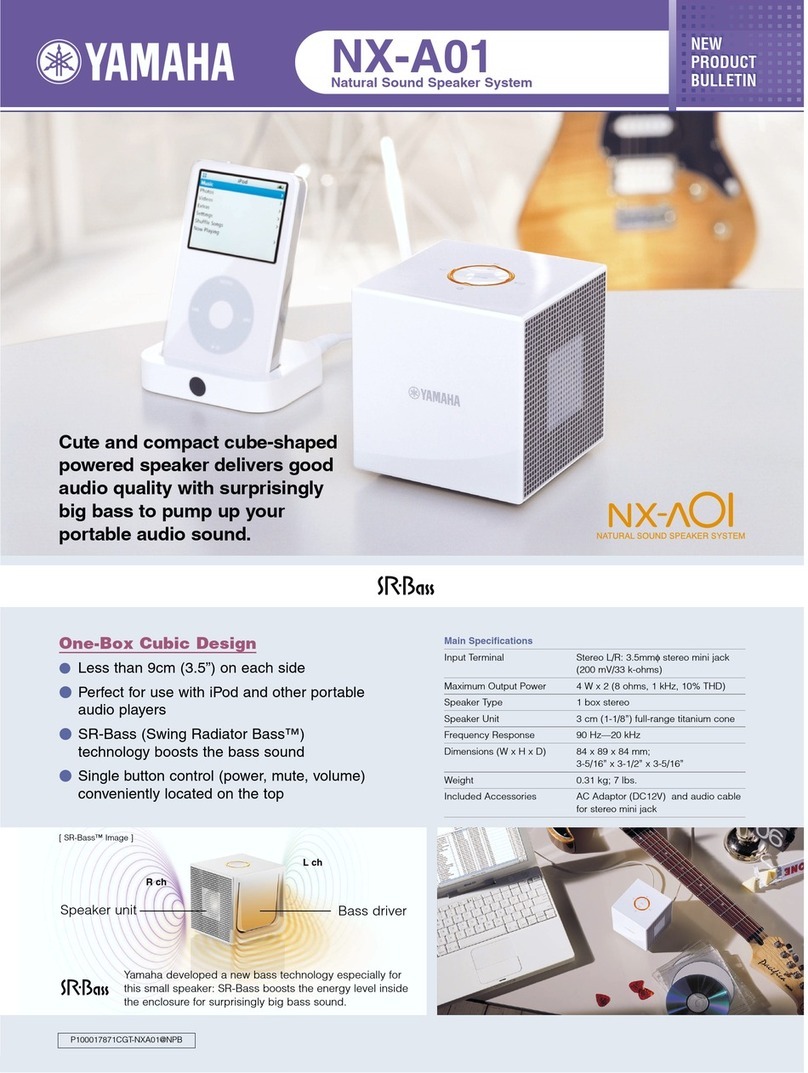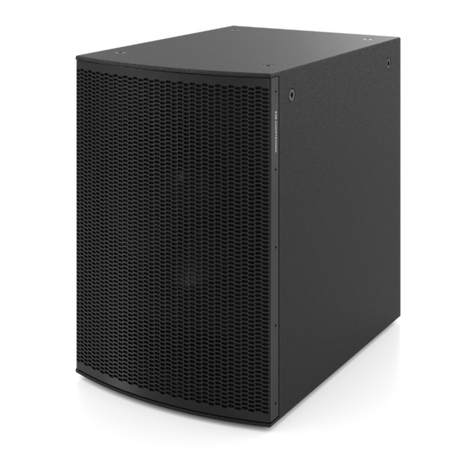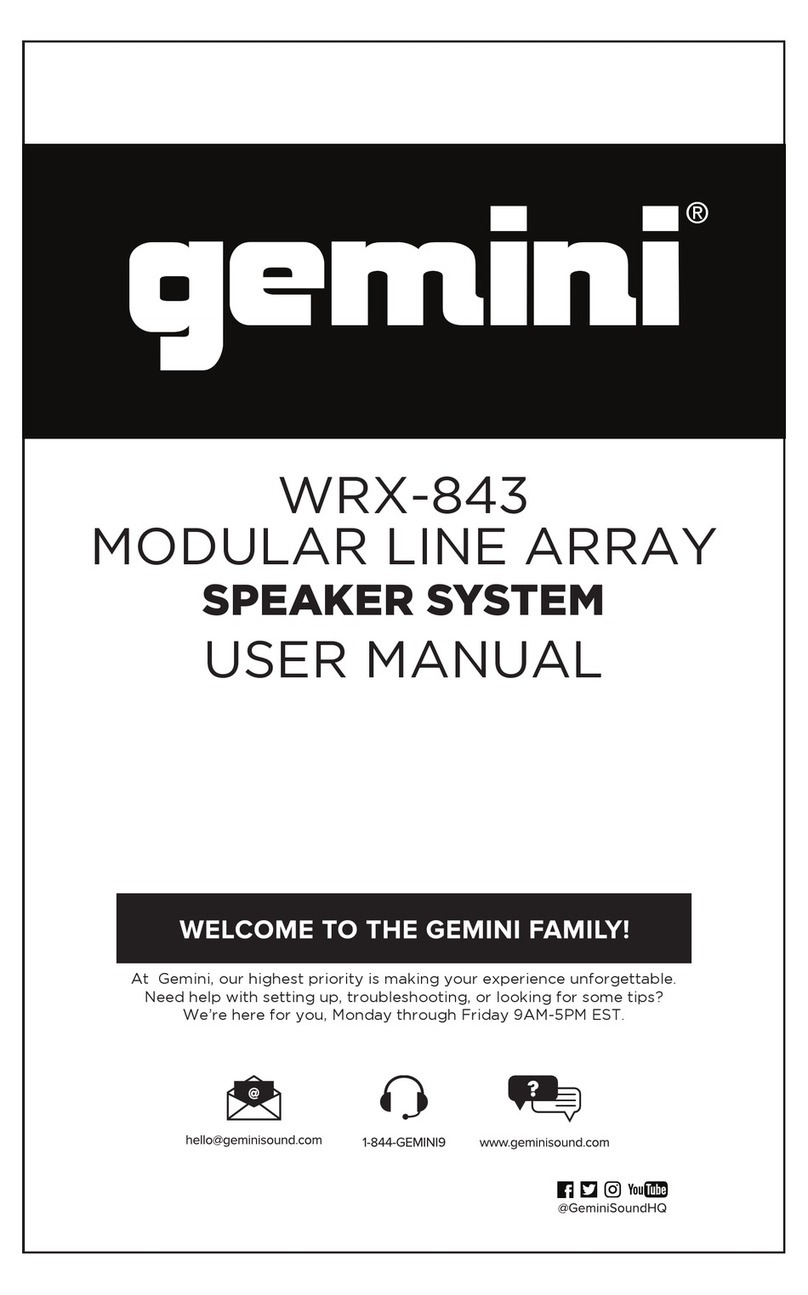
Optional passive crossovers are available for the following systems
KPT-941
KPT-535 (Mid-bass to high frequency only)
KPT-904
KPT-325
Recommended crossover frequencies for the various components can be found in the system specification section.
GENERAL AIMING GOALS
Klipsch theater audio products utilize Tractrix® Horns in the screen and stage systems' mid-bass and high-frequency devices
for precise coverage and projection. By making the appropriate tilt-down adjustments on the supplied installation hardware,
and, if required, toeing-in the left and right outside speakers, you can achieve proper and precise vertical and horizontal aiming
of the system. The degree of toe-in will be determined by the depth and width of the auditorium, and the height and distance
of the screen from the seating area.
For localization to be effective, audience seating must fall inside the horizontal and vertical coverage patterns of the outside
high frequency horns. All Klipsch theater speaker systems utilize consistent coverage angles of 80 degrees or higher, with the
larger auditorium-appropriate systems providing nominal 90 degree coverage angles. Refer to the specification page for
component section coverage data.
BEHIND-THE-SCREEN AND STAGE SYSTEMS
Installation assembly drawings for the behind-the-screen and stage systems are located in the following section. All of the
systems are designed for assembly on-site and only require a few tools to complete. Electronic crossover frequency dividing
network specifications and delay settings are provided in the delay and crossover frequency section. Several of the systems have
optional passive crossovers available. Refer to the previous page for systems with available passive crossovers.
PLACEMENT CONSIDERATIONS
VERTICAL POSITIONING
Behind-the-screen speaker systems should generally be located with the highest frequency horn section positioned at
approximately two-thirds the height of the perforated screen. The front edge of the high frequency horns, after tilt-down and
aiming, should be as close to the back of the screen as possible, without actually touching it. This will help ensure that a
minimal amount of back-reflection from the screen is created, minimizing "comb filter" frequency response anomalies.
HORIZONTAL POSITIONING
For proper localization, seating areas should fall inside the horizontal and vertical coverage patterns of the high frequency horn
devices. In L-C-R, three-channel, behind-the-screen systems, the speakers should be spaced an equal distance apart, with the
outside left and right speakers immediately inside of the unmasked screen area of the widest format projected (typically 2.35:1).
When the screen is masked to smaller formats (such as 1.85:1), acoustically transparent masking should be used to avoid
blocking of the high frequencies. In five-channel behind-the-screen systems, the speakers should be positioned equidistant
from each other across the stage.
The exact amount of toe-in and tilt will be determined by the depth and width of the auditorium, and the height and distance
of the screen from the seating area. The outside speakers' patterns (on axis) should cross two-thirds of the way to the rear. In
doing this, the audience members seated closer to the screen will be slightly off-axis when the speakers are aimed toward the
back wall, with levels balancing evenly owing to the inverse square distance law, front to rear. The Klipsch Tractrix® Horns in
the high-frequency and mid-bass sections will provide linear frequency response, although at reduced levels, as the listening
angle off-axis is increased, up to the pattern limits of the horn components.
